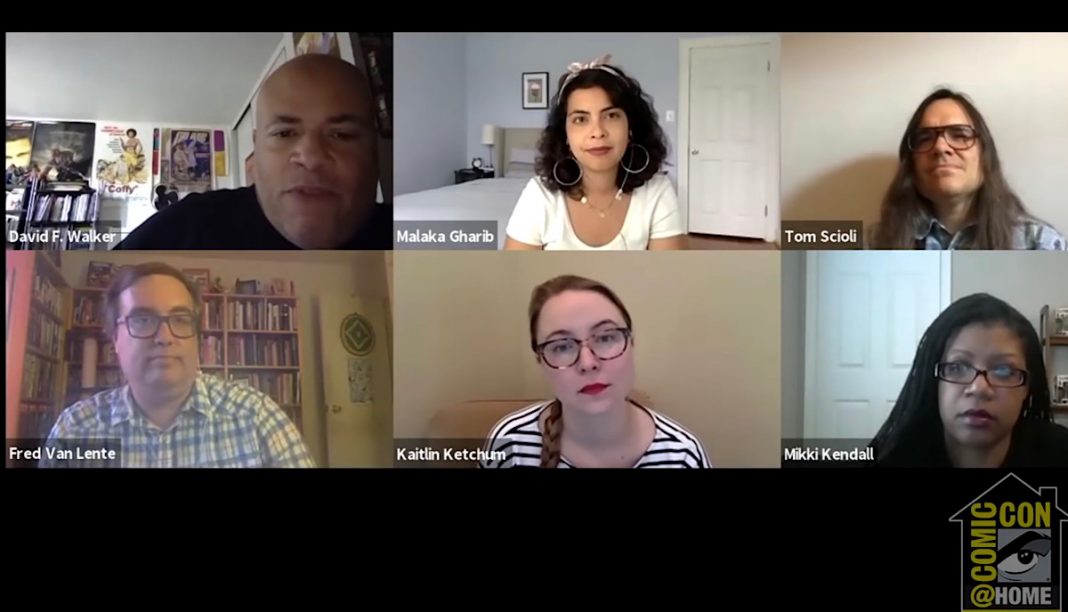When it comes to adapting real life subjects into a comic, there are only so many pages that are available to tell the story. Research and editing often play dueling roles, as the creator seeks to make the visual telling as accurate and honest as possible without sacrificing the story’s integrity. As the speakers on the History Goes Graphic panel can attest, the hard work that goes into creating a non-fiction comic is more than worth the effort when kids, and even adults, learn from it.
Moderator Kaitlin Ketchum (Ten Speed Press) was joined by Fred Van Lente (The Comic Book History of Comics, Action Presidents, among others), Tom Scioli (Jack Kirby: The Epic Life of the King of Comics), David F. Walker (The Life of Frederick Douglass), Mikki Kendall (Amazons, Abolitionists, and Activists), and Malaka Gharib (I Was Their American Dream) to talk about the joys and challenges of creating a non-fiction comic. These creators all shared a desire in making history accessible and more meaningful to a wider audience.
When the question came up of what drew each creator to non-fiction comics, Walker, who tackled the subjects Frederick Douglass and the Black Panthers, had this to say:
“As a kid I was more of a visual learner. I loved comics, and if I looked at a book with a big block of text, it would freak me out. So I would kind of steer clear, and if there were a lot of pictures, I would get into it. I know that there are lots of kids like that, and there are adults out there like that, too. Part of what I love about this medium, which is really emerging and growing, is that it provides an opportunity, at the very least it provides an entry point.”
Kendall found comics as a niche for topics that don’t fit traditional prose:
“What I really wanted to do was tell the history of women’s fight for their rights, but instead of it being like this tiny sliver, which is usually how we learn history, divorced from context. This is the only medium where you could go from 4000 B.C. to the near future and put in pretty colors, and then make it a lot of fun, have the rollercoaster ride, throw in time travel, AI, the distinct concrete facts so a kid would feel like the Magic School Bus meets Doctor Who meets the history class they never got in the first place. For me, this was the perfect medium to turn loose all that frustrated dueling in history class.”
Ketchum asked about the challenges each creator faced in their approaches. Van Lente, Walker and Kendall all cited the balancing act between too much and not enough information and conveying age-appropriate content without shying away from the intent. For Scioli and Gharib, the challenge was in depicting a subject with visual accuracy while still revealing its human voice. They all agreed that while research and editing could be painful, the payoff with the final product was worth the effort.
Gharib summed up best the discussion in History Goes Graphic best when she spoke of comics as the vehicle for drawing the reality one imagines.
“Whatever you want, you can be.”
Miss any of our other SDCC 2020 coverage? Click here for much more!







